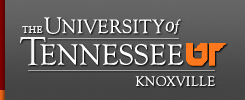Abstract
Called a “protest anthem” for urban America, Inner City Blues, the final single from R&B artist Marvin Gaye’s award-wining album What’s Going On, documents American urban life by detailing the systemic barriers to economic independence and social equality that plagued urban residents and the impact of these barriers on their daily lives. The song (and album) were released in 1971 as Gaye’s journalistic exploration of the poverty-induced challenges and frustrations of urban life. Almost fifty years later, unfortunately, not much has changed. This is because the operation of law in urban communities historically not been designed to work for the benefit of poor urban residents but, instead, for the benefit of other interests, such as private developers and business interests. Why? Because urban residents are frequently viewed as the “problem” of the urban core. America has attempted to “fix the problems” of its cities since cities first began appearing on the American landscape a couple of hundred years before the release of What’s Going On.
Rightly or wrongly, any list of urban problems will typically include challenges such as traffic congestion, crime, gang violence, underperforming public schools, and high rates of poverty. State and local governments have implemented an assortment of programs, including development tax incentives such as tax increment financing, to cure these problems. The majority of these initiatives, however, rarely are designed to meet the actual challenges endured by poor urban residents. Instead, these programs focus on creating enticements to lure a new “type” of urban resident—one who is not poor. In other words, the “fixes” are designed to displace poor black urban residents instead of engaging directly with the source of the problems.As such, proposed fixes have been largely mismatched to the problems in the urban core. For example, disparities in educational opportunities, limited access to quality affordable housing and healthcare, high unemployment rates, and the biased execution of policing practices are urban realities that cannot be cured by the construction of new highways, sports stadiums, luxury high-rise apartments and condos, or the opening of craft breweries.This ongoing mismatch of strategy to “perceived problem” calls for reimagining the application of law in the urban core to address the urgency of poverty.
Recommended Citation
Crowder, Patience A.
(2019)
"Impact Transaction - Using Collective Impact Relational Contracts to Redefine Social Change in the Urban Core,"
Tennessee Journal of Race, Gender, & Social Justice: Vol. 8:
Iss.
1, Article 1.
Available at:
https://ir.law.utk.edu/rgsj/vol8/iss1/1
Included in
Contracts Commons, Law and Politics Commons, Law and Society Commons
